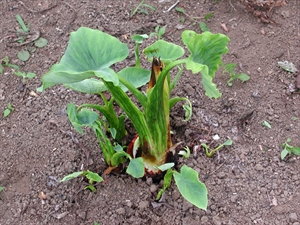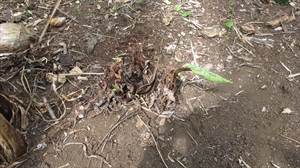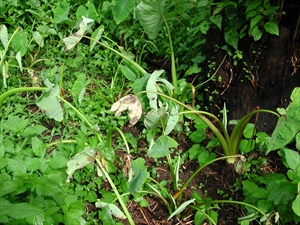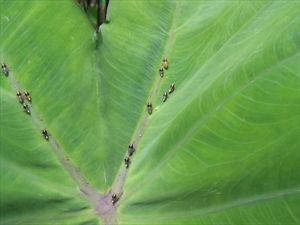- Narrow distribution. In Papua New Guinea and Solomon Islands. Only on taro. Important virus diseases.
- Plants are stunted with twisted, sometimes with thickened, leaves. Most varieties die from alomae; a few are resistant but develop bobone. Taro with bobone recover and look healthy.
- Spread is in planting material and by insects; taro planthoppers are especially important.
- Cultural control: make new gardens far from old ones; remove plants with alomae as soon as symptoms seen, and burn or bury them; do not take suckers for planting from gardens with alomae; plant varieties resistant to alomae, even if susceptible to bobone.
- Chemical control: use synthetic pyrethroids to kill planthoppers.



















